In this article, we examine the Dwarf 2 vs ZWO Seestar S50 to see how they compare and what the differences are.
I have a DWARF 2 telescope so I can share firsthand experience. This article has also been reviewed by ScottCAstrophotography who has both a Dwarf 2 and a ZWO Seestar S50 and has generously shared his input and images from using both models.
I thoroughly recommend the Dwarf 2, it’s an amazing device and well worth the money.
The TL/DR overall is that both these telescopes are amazing devices given their price. The high-level comparison points on how they differ are:
— Dwarflab Dwarf II – More compact and portable and can image larger astronomical objects with a wider field of view (read the review)
— ZWO Seestar S50 – Higher image quality due to narrower field of view and higher aperture, but larger and less portable (read the review)
Let’s get into how they compare in more detail, including images.
Dwarf 2 vs ZWO Seestar S50: Specifications
From looking at the specifications, we can see a couple of key things:
- The Seestar S50 has a higher aperture and longer focal length
- The Dwarf 2 has a higher camera resolution and is lighter
| DWARF 2 | ZWO Seestar S50 | |
| Aperture | 24 mm | 50 mm |
| Focal length | 100 mm | 250 mm |
| Focal ratio | F/4.2 | F/4.9 |
| Weight | 1.2 kg | 3 kg |
| Size (mm) | 204 x 62 x 130 | 142 x 129 x 257 |
| Megapixels | 8 MP | 2 MP |
| Resolution | 3840 x 2160 | 1920 x 1080 |
| Sensor | Sony IMX415 | Sony IMX462 |
| Price | $459 – $595 | $499 |
Now let’s look deeper at the similarities and differences.
Dwarf 2 vs ZWO Seestar S50: Similarities
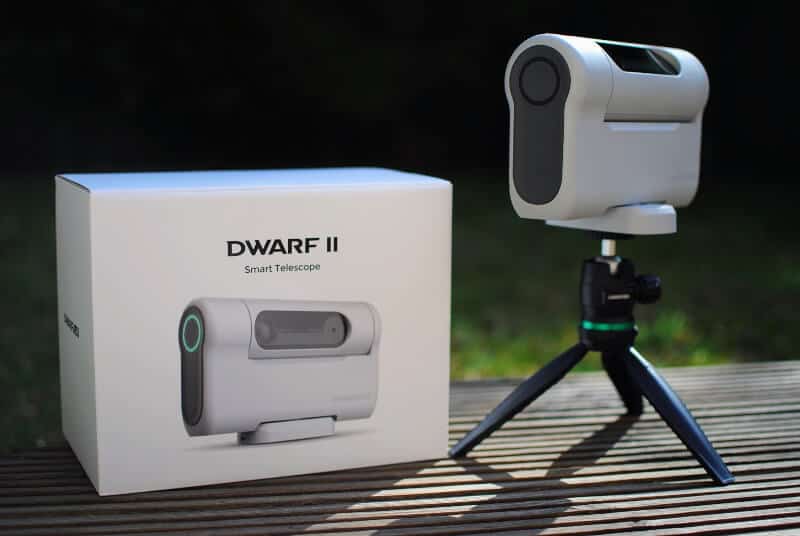
In terms what is the same or similar about the Seestar vs the Dwarf 2:
- The DWARF II and Seestar S50 are both smart telescopes, operated via app on your smartphone. They scan the sky, take you to what you want to see, image it, and send the photo to your phone.
- They are both small and light and designed to be easy to use.
- Both models have been getting great feedback from those who already have their hands on one (or both) of them in 2023.
- Both sell for around $500, depending on the package (and whether there are any sales on). This makes them substantially cheaper than any of the smart telescopes previously available.
Now let’s examine how they differ.
Dwarflab Dwarf 2 Advantages vs Seestar S50
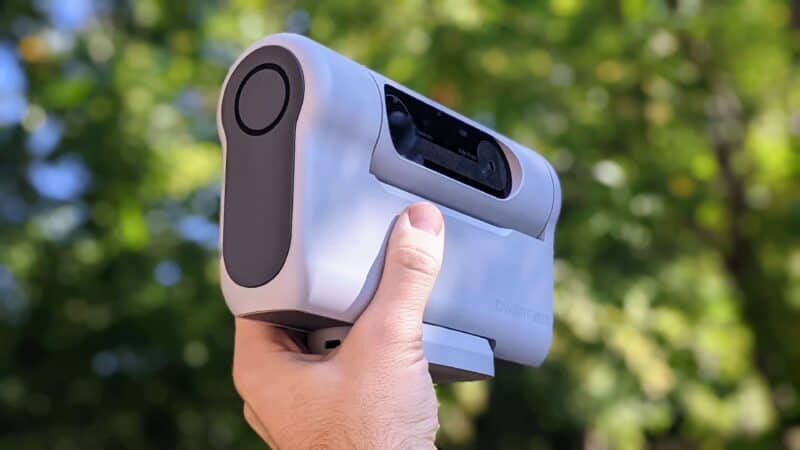
Firstly, the DWARF II has a number of pros that we can identify:
- Higher Camera Resolution: The DWARF II has a higher resolution 8MP camera versus the 2MP camera of the ZWO model
- Wider Field of View: The DWARF 2 has a wider FOV (resulting from a shorter focal length) which means it can capture large astronomical objects like the Orion Nebula, Running Man Nebula, or Andromeda Galaxy. The Seestar has a narrower FOV.
- Greater Portability: The DWARF II is smaller and lighter – coming in at less than half of the weight of the Seestar – and packs up neatly in its compact carry case
- Changeable Accessories: It is easy to add solar, lunar, or light pollution filters to the DWARF 2 to experiment with, even those not made by DWARFLAB.
- Alignment: The DWARF 2 can be polar aligned but the Seestar must be level or the calibration will not work (although the alt-azimuth mode does not need polar alignment)
- Equatorial Mode: The DWARF 2 can be set up in equatorial mode. The Seestar S50 currently only allows altazimuth mode but they said to me that they may consider adding an equatorial mode if enough people ask for it
ZWO Seestar S50 Advantages vs Dwarf 2
Looking then at the ZWO Seestar S50, we can see some of the positives that it has in comparison to the Dwarf II:
- Higher Aperture: The Seestar aperture is double that of the DWARF, therefore having four times the light-gathering power and improving the imaging capabilities
- Longer Focal length: The focal length is more than twice as long as the DWARF meaning a narrower field of view but getting in much closer to the objects you are imaging
- Larger Pixel Size: The Seestar’s lower resolution means that it has a larger pixel size which is better for imaging deep-sky objects
- Taller Tripod: The SeeStar comes with a sturdy tripod with a built-in level. The Dwarf 2’s tripod is smaller.
- Hardier Case: Although bigger and heavier, the Seestar’s carry case is hard-shelled and sturdy
- Dark Frames: The Seestar automatically does the dark frames, you need to do this manually with the Dwarf
- In-Built Filters: The Seestar has an in-built light pollution filter (the duo-band filter), dark filter, and UV-IR Cut filter
- Reputation: ZWO has a good history and reliable reputation of delivering high-quality astrophotography gear, with their CCD/CMOS cameras dominating and more recently with very popular harmonic drive mounts and ASIAIR devices. DWARFLAB are relative newcomers to the astrophotography gear scene.
Overall then, you can see the main reason you might opt for the Seestar is the improve image capacity, and the main reason you might go for the Dwarf 2 is the greater portability and adapability.
Note that somethings can change over time, especially things that can be improved with firmware or software updates. For example, the Seestar will eventually be getting a Mosaic mode to eliminate any field rotation and make a bigger more detailed image. Also, the Dwarf ii will soon be getting a new update incorporating the star atlas.
Dwarf 2 vs ZWO Seestar S50: Images
Now for the key question – how do they compare for the images they can take?
You can see a number of examples below that show that you can get great results with either model.
One thing to note though is that with the DWARF and the SeeStar you will get both a JPEG and FIT file of the images you take. The difference is:
- A JPEG has some processing done to it so that you can use it right away if you are happy with it
- A FIT file contains more data but is wholly unprocessed. With these you can use it in post-processing software like Siril to create a better image if you know what you are doing.
This is just like with a DSLR camera, where you can choose it to take JPEGs or RAW images (or both).
DWARF 2 Images
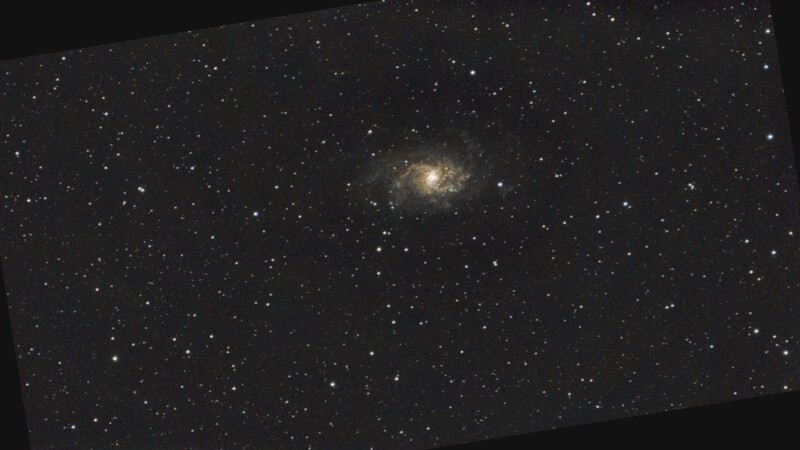
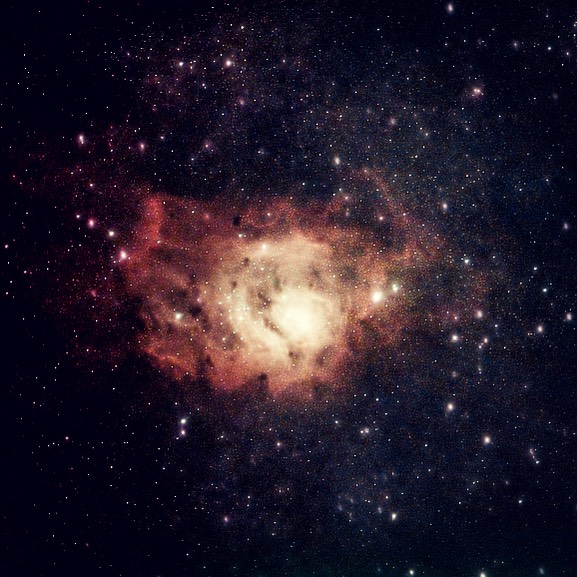
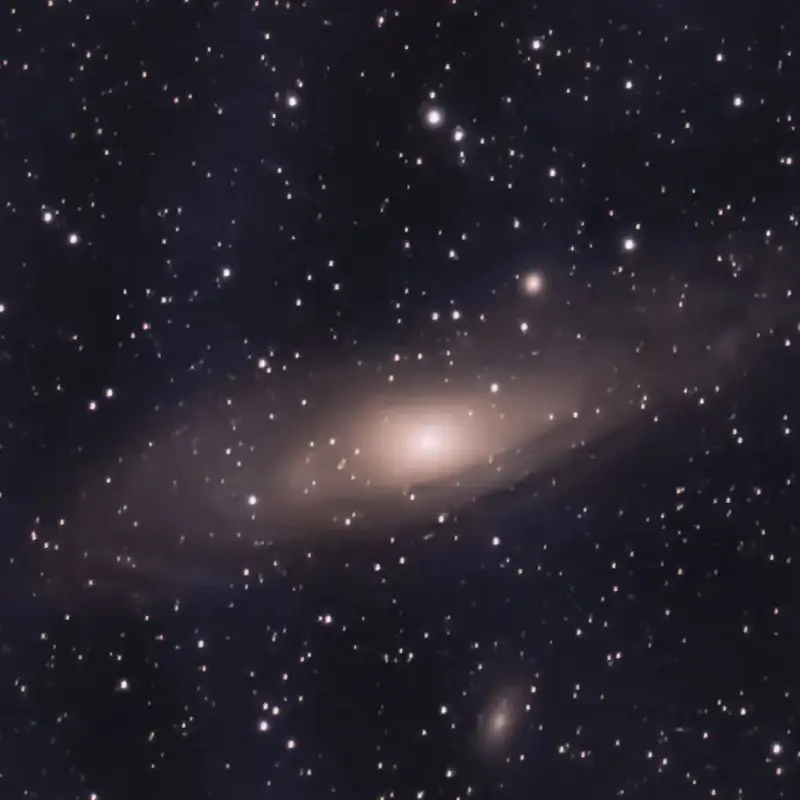
ZWO Seestar S50 Images
These images come from ScottCastrophotography:
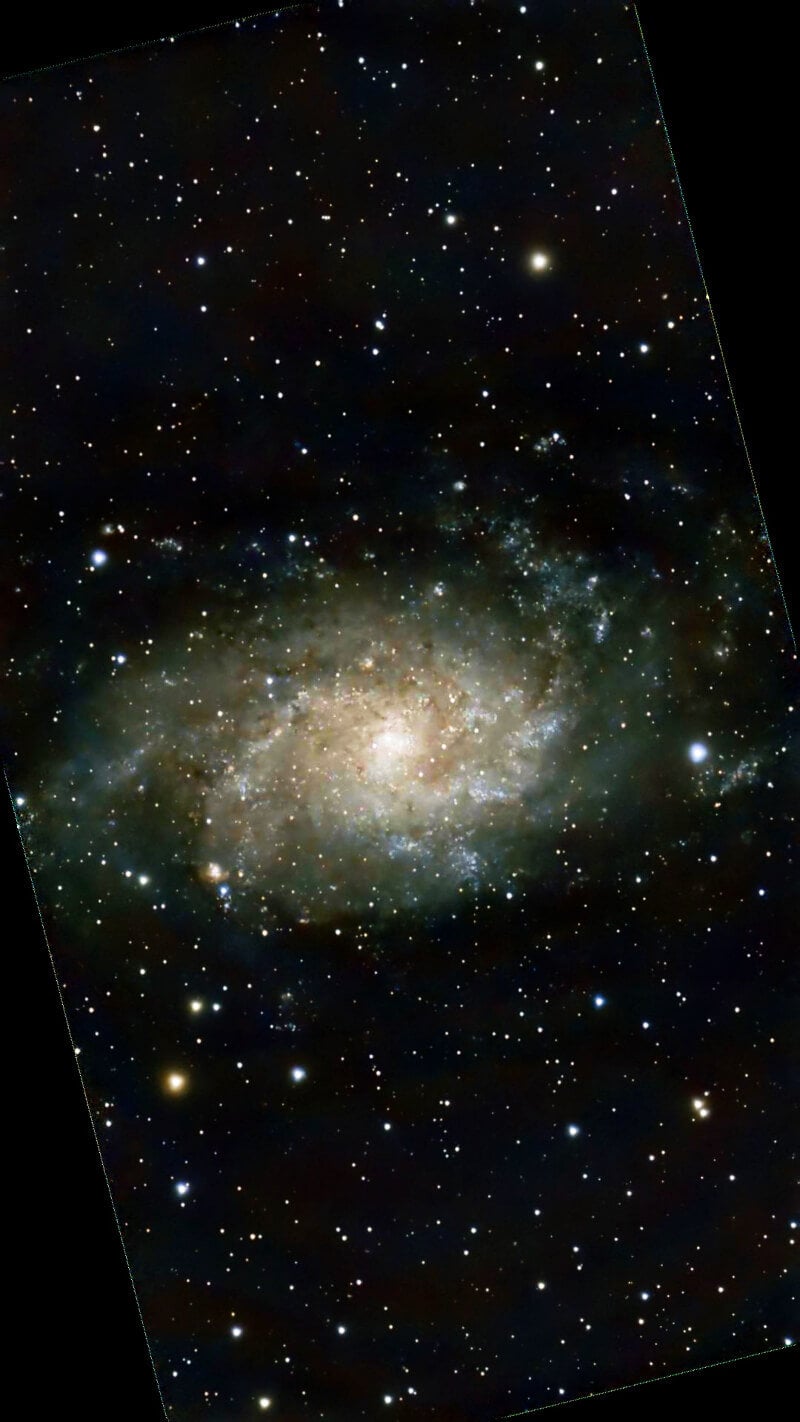
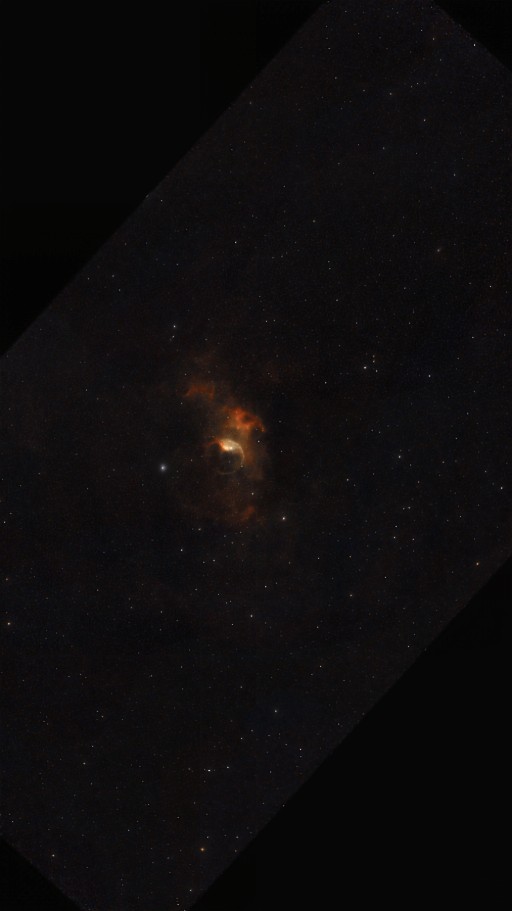
Here you can see an example of solar imaging with the Seestar S50:
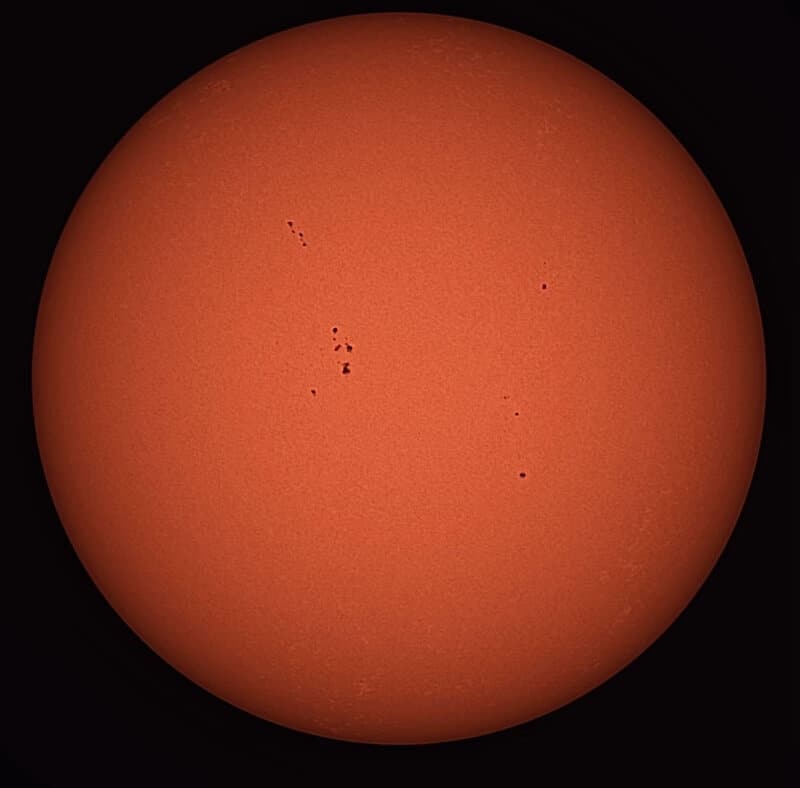
Dwarf 2 and ZWO Seestar S50: Alternatives
The main alternatives to these two telescopes are the Vaonis Vespera and Vaonis Vespera II.
It is similar in terms of aperture, focal length, and camera resolution to the ZWO Seestar but quite a bit more expensive.
However, it does boast a slick interface and great usability. This is something that Vaonis has perfected – making their telescopes easy to use straight out of the box.
To see all available smart telescopes and how they compare, go to Best Smart Telescopes.
Verdict: ZWO Seestar S50 vs Dwarf 2
2023 is turning out to be the year that smart telescopes became affordable and within the reach of “regular” people.
Previously the only available options were thousands of dollars, but two new models have emerged this year that are available for a fraction of the cost.
The Dwarflab Dwarf II was released earlier in the year and has shaken up the market by providing a budget alternative to the premium models from Vaonis and Unistellar. It is easy to use and extemely portable.
Budget Smart Telescope
- Shoot deep space objects in minutes with no expertise or experience necessary
- Great value at a budget price
- Light and portable - easy to store and travel with
- Limited image quality with relatively low aperture
- Not good for planetary imaging with short focal length
- Slightly fiddly setup and calibration processes
In April 2023, ZWO announced their own budget smart telescope, the ZWO Seestar S50.
It is also easy to use, but less portable. However, it appears to have the edge on imaging capabilty.
Budget Portable Smart Telescope
- Take astrophotography images with the press of a button
- 50mm aperture and 250mm focal length
- ZWO has a track record of delivering high-performing astrophotography gear
- Slightly bigger than its main competitor (the Dwarf 3) and the Seestar S30
- Relatively low resolution at 2MP
- Not great for planetary imaging
Thanks to ScottCAstrophotography for his input to this article. Please check out his video where he compares the performance of the Dwarf 2 and Seestar S50 side-by-side:
Let me know if you have any comments or questions below.
More information and related content:






“Aperture: The Seestar aperture is double that of the DWARF, therefore having twice the light-gathering power”
Correction: The Seestar should have Four times the light-gathering power as we’re talking about area here, i.e. (50*50)/(25*25) = 4X
Thanks Arief!
Thanks for mentioning my video and photos! I actually have another video about this exact subject of the article releasing on my channel with photos taken from seestar and dwarf ii of the M33 galaxy! Feel free to check it out tomorrow at noon!
Awesome! Thanks Scott!
If you would like the high quality images from Seestar and Dwarflab just send me an email if you can and I’ll send them!
Thanks Scott! I’ll send you a message.
Hi,
I am interested in seeing the same images taken from the Seestar and Dwarf 2. My email address is finno5555@yahoo.com
Thank you.
Finn
I pre-ordered the SeeStar S50 at the $399 price back in July, but, I am expecting a mid-October delivery. I just ordered the Dwarf 2 the other day and am expecting delivery on August 31. What do you think about the decision to own both? The reasons I decide to order the Dwarf 2 are: I would have it available for the Annular Eclipse this year. I do wildlife photography and liked the Dwarf 2 for video of wildlife. I like the idea of automated high megapixel panorama landscapes using the Dwarf 2. I hope to do some wide angle Milky Way photography with the Dwarf 2 something I can’t do with the SeeStar S50. Having experience with the Dwarf 2 do you think these are valid reasons to own both, or did I waste my money buying the Dwarf 2?
I see no problem with owning both. Just give them both a good shot and see what you like best and if you need both. You can always sell one if you think you don’t need it. Cheers
Both? That’s better than owning either one! You’ll love it.
I was torn because of living in heavy duty light pollution but have seen good results from filtered, short exposure & stacked images. It occurred to me the Dwarf might win out with a lesser aperture but higher resolution chip and so I might end up indulging in both for slightly different purposes. Having heard the Dwarf does panoramas too has almost got me reaching into my pocket but I might leave it a little longer & enjoy the Seestar from October, then see if the Dwarf finds itself in the Christmas stocking too? Thanks for the very informative comparison of the two!
How does the Seestar compare to the Equinox 2? I’m willing to spend the extra money if it’d worth it for the Equinox.
The eQuinox 2 is better, it just costs a lot more. If money isn’t an issue then go for the Unistellar model. Good luck!
The Unistellar has a circular photo, which seems quirky at first. The reason why is answered after you take some Seestar photos and see the effects of field rotation. What’s left? A circular region in the center, the width of the photo area that contains information from all your subs.
Great article! I’m trying to determine which unit would arrive faster?
Is there currently a delay when ordering one or the other?
Clear skies!
The Dwarf 2 is definitely shipping quicker than the Seestar right now (Sept 2023). This is likely to change all the time though, so best check on their respective websites. Good luck!
Not sure why you say the Dwarf II is easy to use. IMO, it’s not for beginners. I got one months ago and have yet to get a good night sky image with one. (daylight images were easy). The default settings do not produce and image, so I assume you have to know how to adjust them. I have not figured out how yet. I got good images the first night out with Stellina and eVscope II. (Don’t get those now, btw. For half the price, Vespera and eQuinox II produce images that are on par with their older brothers/sisters). A friend got his Seestar last week, and again, we got good images the first night out. (without reading the manual, like real men!). I cannot recommend any beginner get the Dwarf II.
Thanks Mike! That’s useful for others to hear.
With any of these my pro tip is FIND AN ASTRONOMY CLUB AND JOIN. Select for those that are not conspicuous consumption bragging clubs. You want people that won’t look down on you for owning a little automated scope. My club, St Petersburg Astronomy Club (Florida) is perfect if you want to really get the most out of your scope. Other astronomy clubs are just as good, but the baddies are out there.
Thanks Steve!
I love the dwarf. It opens the door to astronomy to a lot of people. Unfortunately I dropped my dwarf this morning after letting it shoot all night. It still works though. So they can take a beating lol.power button and panel with battery LEDs popped off and ripped the ribbon cable going to the leds. I’m interested in an S50. I don’t like the narrow view but the are getting ready to add mosaic mode which changes the game with the see star
Thanks Aaron!